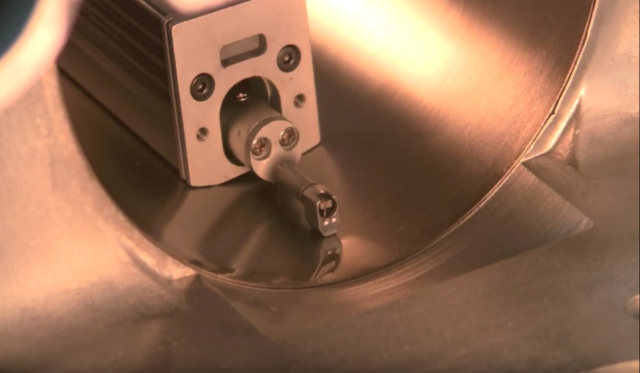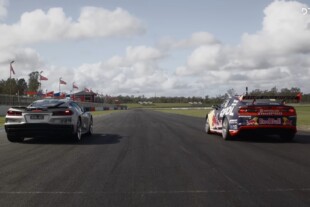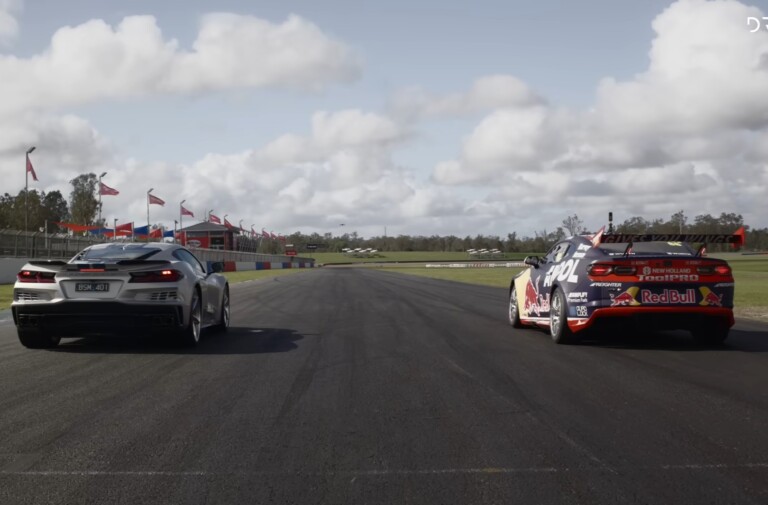When building an engine, you often hear people mention piston to cylinder bore clearance on freshly machined blocks. While cylinder geometry is critical to engine performance and reliability, there is another measurement that is rarely mentioned outside of a shop, but has just as much of an influence on performance and reliability.
When a cylinder is machined, the crosshatch pattern that is left behind has a rough finish in comparison to a cylinder wall with some wear on it. Using a profilometer to measure the roughness average (Ra) of the cylinder wall finish gives you an average of the peaks and valleys present in the cross hatch pattern, from the mean line. The piston ring manufacturer will usually provide you with an acceptable Ra range.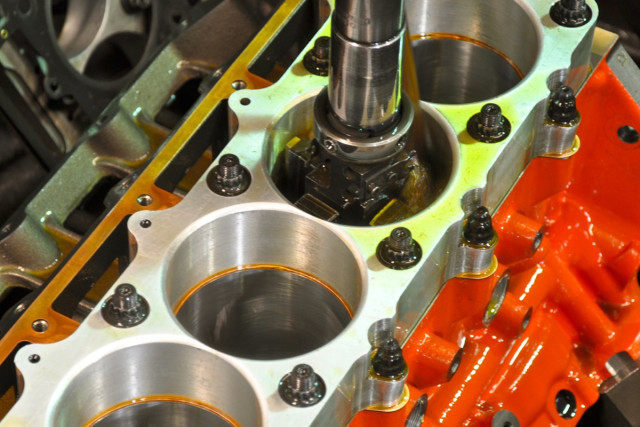
The extremely knowledgeable team at EFI University created the video above that explains what a profilometer is, how to use one, and why it’s so important for an engine build.
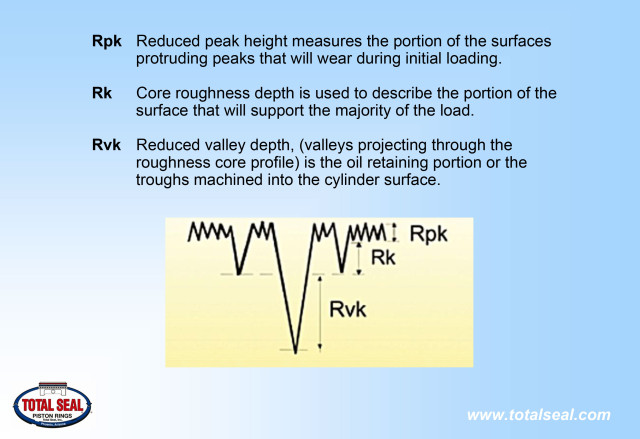
Photo source: Total Seal
The profilometer is sat in the freshly honed cylinder and drags a diamond tipped stylus over a small surface area of the cylinder wall. The stylus is connected to a computer that displays various data, including — roughness average (Ra), reduced peak height (Rpk), core roughness (Rk), reduced valley depth (Rvk), root mean square (rms), etc.
How steep or deep those peaks and valleys are will have an affect on oil consumption, cylinder wall lubrication, piston ring rotation, piston ring break-in, and power output. The peaks will be quickly worn down during the break-in period and create a plateau for the piston ring to seal against, while the valleys will hold the oil that is used to coat the cylinder walls to prevent direct contact between the piston ring and cylinder wall.